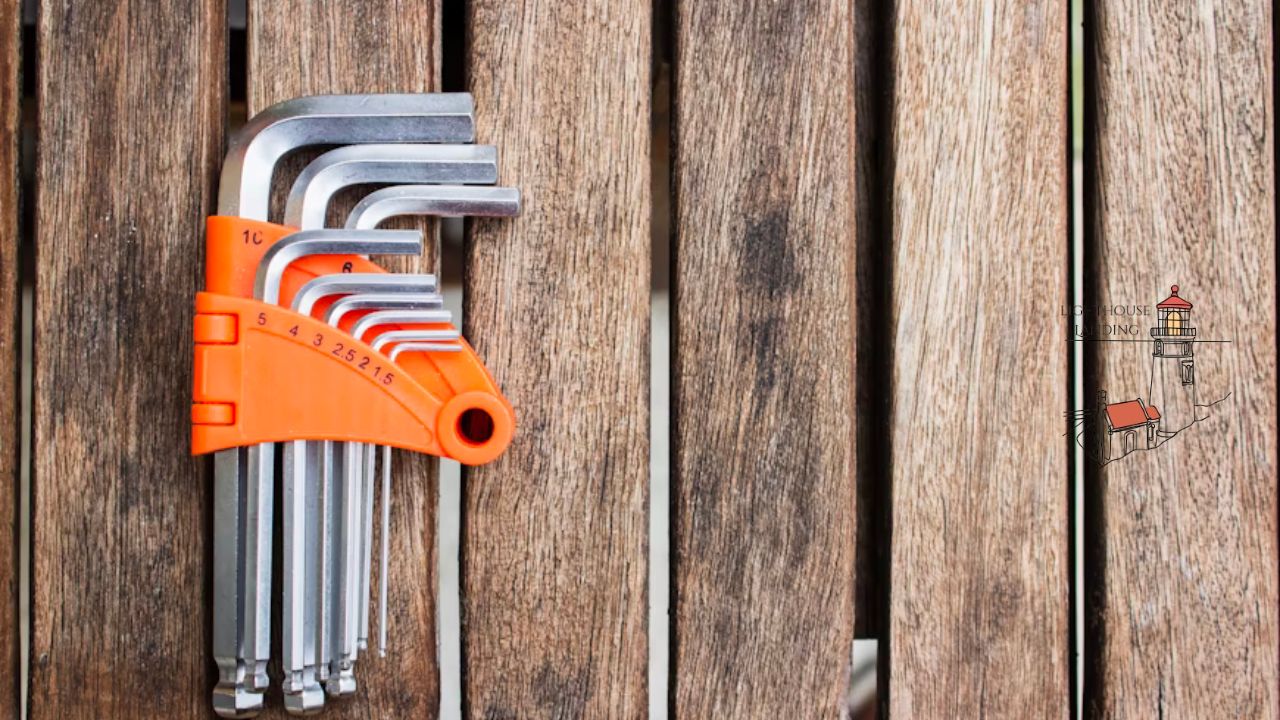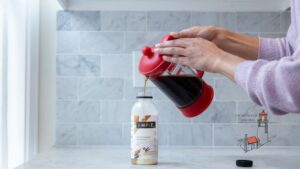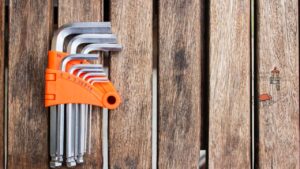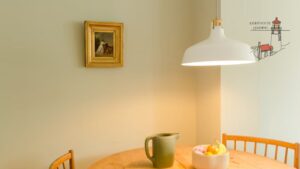Have you ever faced a cleaning challenge so tough it felt impossible? From stubborn grease on kitchen walls to decades of grime on exterior siding, some messes require a truly powerful solution. That’s where a heavy-duty product like TSP cleaner comes into play, offering a level of deep cleaning that standard household products simply can’t match.
Trisodium phosphate, or TSP, has been a trusted ally for professional painters and serious DIY enthusiasts for generations. This potent, inorganic chemical compound is renowned for its incredible ability to cut through the most resilient dirt, grease, soot, and stains. If you’re preparing a surface for a fresh coat of paint or tackling a deep restoration project, understanding how to use a TSP cleaner correctly can be a complete game-changer.
This guide will walk you through everything you need to know. We’ll explore what makes this cleaner so effective, its various applications, and most importantly, how to use it safely to achieve spectacular results. Whether you’re a seasoned pro or a curious homeowner, get ready to discover the power of a true deep-cleaning legend.
TSP Cleaner at a Glance
To give you a quick overview, here is a summary of what makes TSP cleaner a go-to choice for challenging jobs.
| Feature | Description |
|---|---|
| Product Name | Trisodium Phosphate (TSP) |
| Primary Use | Heavy-duty cleaning, degreasing, and surface preparation for painting. |
| Common Applications | Cleaning exterior siding, decks, greasy kitchen walls, smoke-damaged surfaces, and grimy concrete. |
| Key Benefit | Exceptionally powerful; effectively removes stubborn grease, dirt, mold, mildew, soot, and chalky paint. |
| Form | Typically sold as a dry, white powder to be mixed with water. |
| Safety | Requires protective gear (gloves, goggles, long sleeves) as it can irritate skin and eyes. |
What Exactly Is TSP Cleaner?
At its core, TSP cleaner is an alkaline cleaning agent. The scientific name, trisodium phosphate, refers to its chemical makeup: a compound of sodium and phosphate. When mixed with water, it creates a highly alkaline solution with a pH that can range from 12 to 14, making it incredibly effective at breaking down and saponifying fats, oils, and grease.
Think of it this way: soap works by surrounding oil molecules, allowing them to be washed away by water. A TSP cleaner takes this a step further by chemically reacting with grease to turn it into a soap-like substance, making it incredibly easy to rinse off surfaces. This is why it’s a favorite for prepping greasy kitchen walls before painting.
For decades, TSP cleaner was the undisputed champion of prep-work cleaning. Its raw power was unmatched. However, its main component, phosphate, raised environmental concerns. Phosphates entering waterways can lead to algal blooms, which harm aquatic ecosystems. As a result, many regions have restricted its use, and manufacturers have developed “TSP substitute” products.
These substitutes are phosphate-free and formulated to mimic the cleaning power of traditional TSP. While often very effective, many professionals argue that nothing quite matches the sheer strength of the original TSP cleaner for the absolute toughest jobs. You can still find true TSP in many hardware stores, but it’s often marketed for “exterior use” or specific industrial applications.
Incredible Benefits and Versatile Uses of TSP Cleaner
The enduring popularity of TSP cleaner isn’t just due to tradition; it’s because it delivers phenomenal results. Its powerful formula offers benefits that other cleaners struggle to replicate, making it an indispensable tool for a wide range of projects.
Unmatched Degreasing Power
This is where TSP truly shines. It chemically annihilates grease and oil.
- Kitchens: Years of accumulated cooking grease on walls, cabinets, and backsplashes can ruin a new paint job. A TSP cleaner solution cuts right through this greasy film, leaving a perfectly clean, paint-ready surface.
- Workshops and Garages: Oil splatters, greasy fingerprints, and general grime on walls and floors are no match for TSP. It prepares these hardworking spaces for a fresh, clean look.
The Ultimate Paint Preparation Tool
Painters have sworn by TSP for generations for one simple reason: paint sticks better to a perfectly clean surface.
- Removes Contaminants: A TSP cleaner eradicates everything that can cause paint to fail, including dirt, wax, oil, and body sweat.
- De-glosses Surfaces: The alkaline nature of TSP slightly etches or “de-glosses” shiny, painted surfaces. This microscopic roughening creates a better profile for the new primer and paint to adhere to, ensuring a long-lasting, professional finish.
Exterior Cleaning Powerhouse
Your home’s exterior faces a constant assault from the elements. A TSP cleaner is strong enough to restore its beauty.
- Siding and Brick: It effectively removes chalky paint residue, mildew, algae, and layers of dirt from vinyl, wood, and masonry siding.
- Decks and Patios: Before re-staining a deck, a wash with a TSP cleaner solution can remove old, failing sealant, dirt, and mildew, bringing the wood back to a fresh state.
Mold and Mildew Remediation
The high alkalinity of a TSP cleaner solution makes it hostile to mold and mildew. While it doesn’t contain a fungicide, it does an excellent job of cleaning away the surface growth and the grime that feeds it. For stubborn mold, it’s common to add a bit of household bleach to the TSP solution to both clean and kill the spores.
How to Use TSP Cleaner Safely and Effectively
The immense power of TSP cleaner demands respect. This is not an all-purpose spray-and-wipe product. Following proper safety protocols and mixing procedures is absolutely critical to protect yourself and the surfaces you’re working on.
Step 1: Gear Up for Safety
Before you even open the box of TSP, you must put on your personal protective equipment (PPE). The alkaline solution can cause skin irritation, chemical burns, and serious eye damage.
- Waterproof Gloves: Heavy-duty rubber or nitrile gloves are essential. Do not use cloth gloves.
- Safety Goggles: Protect your eyes from accidental splashes. Regular eyeglasses are not sufficient.
- Long Sleeves and Pants: Cover all exposed skin to prevent contact.
- Respirator (Optional but Recommended): If you are working in a poorly ventilated area or are sensitive to chemical fumes, a respirator can provide extra protection.
Step 2: Prepare Your Workspace
Protect everything you don’t want to clean. TSP can damage or discolor certain materials.
- Cover Surfaces: Use plastic sheeting and painter’s tape to cover floors, carpets, furniture, plants, and any adjacent surfaces you want to protect.
- Ensure Ventilation: Open windows and doors. Use a box fan to create cross-ventilation, especially when working indoors.
Step 3: Mixing Your TSP Cleaner Solution
Always read the manufacturer’s instructions on your specific product, but a general guideline is to mix TSP with warm water, which helps the powder dissolve more effectively.
- Standard Cleaning: For general-purpose cleaning, a common ratio is a quarter-cup of TSP powder per 2 gallons of hot water.
- Heavy-Duty Degreasing: For tackling extreme grease or preparing for paint, you may need a stronger solution. Mix a half-cup of TSP powder per 2 gallons of hot water.
- Mold and Mildew Removal: For cleaning surfaces with mildew, you can add about 1 quart of regular household bleach to your standard TSP cleaner solution. Crucially, never mix bleach with ammonia-based cleaners, as this creates toxic chloramine gas. TSP is not ammonia-based, so it is safe to mix with bleach.
Always add the TSP powder to the water, not the other way around, to prevent splashing. Stir the mixture thoroughly with a paint stick until all the powder is completely dissolved.
Step 4: The Cleaning Process
Application is straightforward but should be done methodically.
- Apply from the Bottom Up: When cleaning walls or other vertical surfaces, apply the TSP cleaner solution with a large sponge or rag starting from the bottom and working your way up. This prevents clean streaks, or “runs,” from forming on the dirty surface below.
- Scrub Gently: Allow the solution to sit on the surface for a few minutes to break down the grime. Then, scrub with a sponge or a soft-bristle brush. You’ll find that the dirt and grease lift with surprising ease.
- Don’t Let It Dry: It’s important not to let the TSP solution dry on the surface, as it can leave a chalky white film that is difficult to remove. Work in small, manageable sections.
Step 5: The Critical Rinsing Stage
Rinsing is arguably the most important step. Any TSP residue left behind can cause new paint to fail.
- Rinse from the Top Down: Using a bucket of clean water and a fresh sponge, rinse the surface thoroughly. Start from the top and work your way down.
- Rinse Twice: To be absolutely sure all residue is gone, rinse the surface a second time with another bucket of fresh, clean water. The surface should feel squeaky clean when you’re done.
- Let It Dry Completely: Allow the surface to dry completely before you even think about opening a can of primer or paint. This can take anywhere from a few hours to a full day, depending on humidity and airflow.
Real-Life Applications and User Experiences
While TSP cleaner is most famous for wall prep, its versatility extends to many other challenging cleaning tasks. Users often express amazement at how it restores items they thought were beyond saving.
Cleaning Kits for Rifles and Firearm Parts
Gun enthusiasts know that carbon buildup and greasy residue are constant battles. While specialized solvents are common, some old-school armorers and hobbyists turn to a very dilute TSP cleaner solution for deep-cleaning metal parts. It’s incredibly effective at stripping away baked-on carbon and grease from components like bolts and receivers.
However, this method requires extreme caution. The TSP solution must be rinsed off immediately and thoroughly, and the parts must be dried completely and re-oiled right away to prevent flash rust. It is far more aggressive than a standard mass air flow sensor cleaner or other delicate electronic cleaners. This is a niche, expert-level use, and many prefer dedicated cleaning kits for rifles that contain less aggressive, rust-inhibiting formulas.
One user on a firearms forum noted, “I used a weak TSP solution to degrease a batch of military surplus parts before parkerizing. It stripped them down to bare metal better than anything else. You just have to be quick with the rinse and oil.”
Reviving Grimy Concrete
Patios, garage floors, and driveways can become stained with oil, grease, algae, and years of ground-in dirt. A TSP cleaner can dramatically improve their appearance.
- Application: Wet the concrete, then apply a strong TSP solution using a deck brush. Scrub the solution into the surface, paying extra attention to stained areas. Let it sit for 15-20 minutes, but don’t let it dry.
- Results: Scrub again and rinse thoroughly with a hose or pressure washer. Users are often shocked to see their concrete return to a much lighter, cleaner shade. It’s a far more powerful option than many standard concrete cleaner products for deep-seated oil stains.
A homeowner shared their experience: “My garage floor was a disaster of oil leaks and grime. I scrubbed it with TSP and hosed it down, and the difference was night and day. It looked almost new.” This powerful cleaning ability makes it a superior concrete cleaner for restorative projects.
Is TSP a Good Glass Cleaner?
In general, no. While TSP can cut through heavy film on glass, it is overkill and risky. If not rinsed perfectly, it will leave a streaky, hazy residue that is very difficult to polish off. For regular window cleaning, a standard glass cleaner is much more appropriate, effective, and safer.
The only time you might consider TSP for glass is in an extreme situation, such as removing heavy smoke or soot residue from a fireplace’s glass doors after a malfunction. Even then, it must be followed by a meticulous rinse and a final cleaning with a proper glass cleaner.
Comparing TSP Cleaner to Other Cleaners
Understanding where TSP fits in the cleaning arsenal requires comparing it to other common products.
TSP vs. TSP Substitute
- Power: True TSP is generally considered more powerful than its phosphate-free substitutes, especially for saponifying heavy grease.
- Environment: TSP substitutes are far more environmentally friendly and are legal to use everywhere.
- Residue: Both true TSP and its substitutes require thorough rinsing to avoid leaving a film that can interfere with paint adhesion.
For most DIY painting projects, a high-quality TSP substitute is more than adequate and is the more responsible choice. For extreme, professional-grade restoration or degreasing, some still seek out the original TSP cleaner.
TSP vs. a Standard Concrete Cleaner
Most off-the-shelf concrete cleaner products are acid-based (for etching) or detergent-based (for general grime). A TSP cleaner is alkaline-based and excels specifically at lifting deep-set oil and grease stains, which many other concrete cleaners struggle with. For routine cleaning, a standard concrete cleaner is fine. For oil stain restoration, TSP is superior.
TSP vs. a Mass Air Flow Sensor Cleaner
This comparison highlights the importance of using the right tool for the job. A mass air flow sensor cleaner is a precision aerosol product designed to gently clean delicate electronic sensors without leaving any residue. Using a TSP cleaner on such a component would instantly destroy it. This is an extreme example, but it illustrates that the brute force of TSP is meant for durable, non-sensitive surfaces like walls, wood, and concrete, not electronics or delicate machinery.
User Reviews and Ratings: What Do People Really Think?
Across hardware store websites and DIY forums, the sentiment around TSP cleaner is remarkably consistent. It is almost universally praised for its power, with the main caveat being the need for safety precautions.
- Positive Reviews (5/5 Stars): “This is the magic powder for painters. I washed the walls of a smoker’s house, and the nicotine literally dripped off the walls. The paint job came out flawless because the surface was truly clean.”
- Positive Reviews (5/5 Stars): “I used this to clean my disgusting vinyl siding. It took off years of green and black gunk with just a little scrubbing. My house looks 10 years younger.”
- Critical Reviews (3/5 Stars): “The product works amazingly well, but the warnings are no joke. I was careless and didn’t wear gloves, and my hands were red and peeling for days. Respect the strength of this stuff!”
The consensus is clear: for heavy-duty cleaning and paint prep, TSP cleaner is a top-tier product that delivers on its promises. The negative feedback almost always stems from improper use or a failure to follow safety guidelines, reinforcing the importance of our “How-To” section.
Frequently Asked Questions (FAQs)
Here are some common questions people have when they first encounter this powerful cleaner.
Is TSP cleaner safe to use indoors?
Yes, it is safe to use indoors, provided you take the proper precautions. This means ensuring excellent ventilation by opening windows and using fans, and protecting all surrounding surfaces from splashes.
Can I use TSP cleaner in a pressure washer?
It’s generally not recommended. Most pressure washer manufacturers advise against running anything other than approved detergents through their pumps. The abrasive and corrosive nature of a TSP solution could damage the pump’s seals and internal components. The better method is to apply the solution manually with a brush, then use the pressure washer (with plain water) for rinsing.
What happens if I don’t rinse TSP off properly?
If you leave TSP residue on a surface, it will dry into a fine, white, crystalline film. This film will prevent paint and primer from adhering properly, leading to peeling, flaking, and a failed paint job. Thorough rinsing is non-negotiable.
Does TSP kill mold?
TSP cleans away mold, mildew, and the grime they feed on. Its high-alkaline nature is also inhospitable to new growth. However, it is not a registered fungicide. For a true kill-and-clean approach, experts recommend adding household bleach to your TSP cleaner solution.
Can I use TSP cleaner on my wood deck?
Yes, a TSP cleaner is fantastic for prepping a wood deck before staining. It removes dirt, mildew, and even old, failing water sealants. Just be sure to rinse it thoroughly to avoid any residue that could interfere with the new stain.
The Final Word on TSP Cleaner
For the most demanding cleaning jobs, TSP cleaner remains a powerful and effective solution. Its ability to chemically break down and remove the toughest grease, grime, and smoke damage is second to none, making it an invaluable tool for professional painters and ambitious homeowners. From prepping kitchen walls to restoring old concrete, the results can be truly transformative.
However, this power comes with responsibility. Safe handling—including wearing protective gear, ensuring proper ventilation, and protecting your surroundings—is not optional. And the final, thorough rinse is the key to unlocking a perfect finish.
While phosphate-free substitutes offer a great, eco-friendly alternative for many jobs, the original TSP cleaner still holds its place as the ultimate weapon against the most stubborn dirt. When used correctly, it’s the secret to achieving a truly professional-grade clean and a flawless, long-lasting paint job.
Admin Recommendation
Your Ultimate Guide to Grand Rivers KY Lighthouse Landing Resort
Discover Paradise at Lighthouse Landing Resort: Your Gateway to Kentucky Lake Adventures












